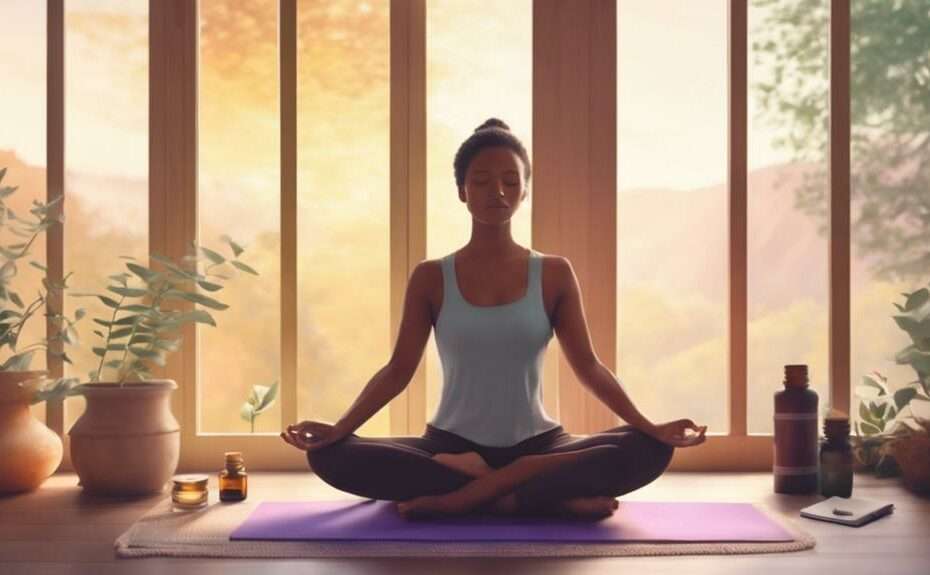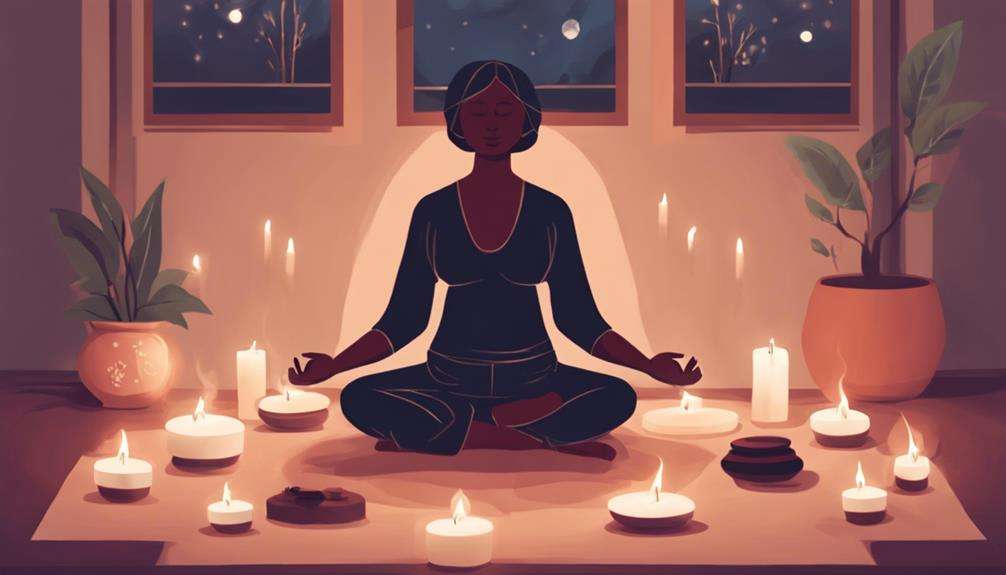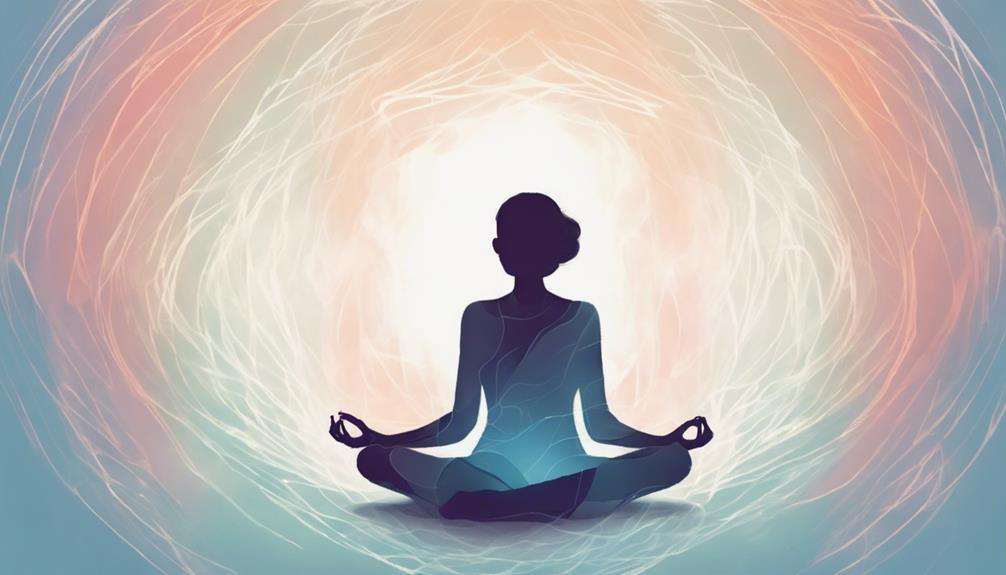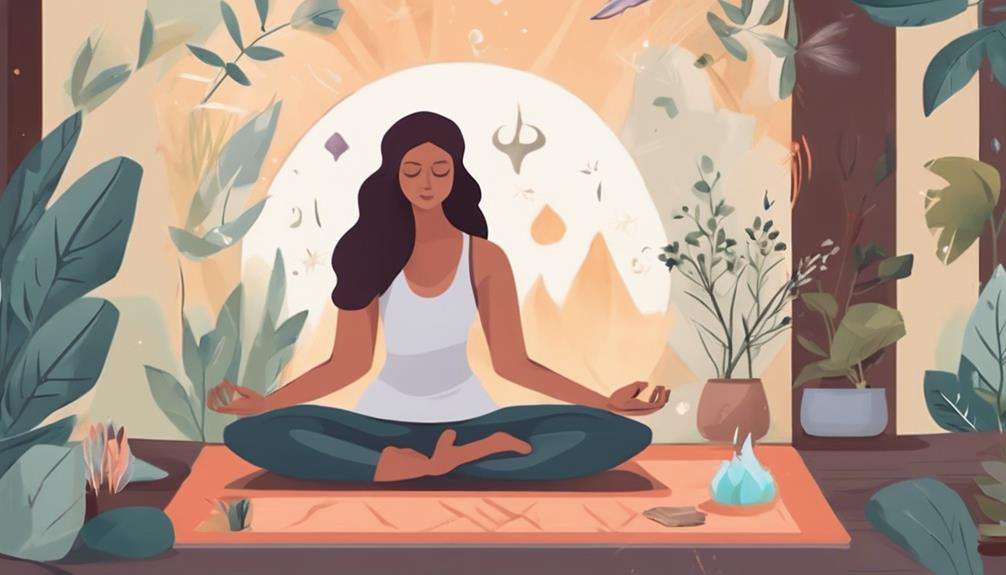You might not be aware that incorporating mindful practices into your daily routine can significantly help in reducing anxiety levels.
Have you ever considered how simple techniques like mindful breathing or body scan can make a difference in your mental well-being?
These practices are not just about relaxation but about actively engaging with your mind and body to cultivate a sense of peace and control.
By exploring the five techniques outlined, you can discover powerful ways to manage anxiety and enhance your overall quality of life.
Key Takeaways
- Engage in mindful breathing to calm the mind and alleviate anxiety effectively.
- Practice mindful eating to prevent overeating, improve digestion, and support weight management.
- Try walking meditation to reduce stress, enhance relaxation, and stay grounded in the present moment.
- Utilize body scan techniques to promote relaxation, strengthen mind-body connection, and identify areas of tension.
Mindful Breathing
To effectively practice mindful breathing, begin by focusing your attention on the natural rhythm of your breath, allowing it to guide you towards a state of calmness and relaxation. This technique of breath awareness is a powerful tool for reducing stress and managing anxiety.
By concentrating on your inhalations and exhalations, you can bring your awareness to the present moment, steering your mind away from worries and anxieties that may be causing stress. Mindful breathing works by calming the mind and promoting relaxation, which are essential in combating the body's stress response.
Studies have shown that mindful breathing can decrease activity in the amygdala, a region of the brain linked to processing emotions like fear and stress. By engaging in mindful breathing exercises, you can effectively regulate your body's stress levels and cultivate a sense of peace and tranquility.
This practice is simple yet impactful, offering a quick and convenient way to alleviate anxiety and promote overall well-being.
Mindful Eating
Engage fully with your meal by practicing mindful eating, focusing on the taste, texture, and sensations of each bite. Mindful eating involves more than just consuming food; it's about being present in the moment, tuning into your body's hunger cues, and making healthier choices. By paying attention to the experience of eating, you can prevent overeating and cultivate a deeper connection with your food.
When you slow down and savor each bite, you give yourself the opportunity to appreciate the flavors and textures of the food, leading to a more satisfying meal. Mindful eating isn't just about what you eat but how you eat it. By fostering this mindfulness, you can improve digestion, enhance nutrient absorption, and even manage your weight more effectively.
Research shows that practicing mindful eating can reduce emotional eating tendencies, support weight management goals, and contribute to overall well-being. So, next time you sit down for a meal, remember to engage all your senses and enjoy the nourishment your food provides.
Walking Meditation

Exploring the practice of walking meditation can offer a unique blend of physical movement and mindfulness to enhance relaxation and awareness. By engaging in walking meditation, you can bring your attention to the present moment, focusing on each step, breath, and the sensations that arise as you walk. This intentional awareness of your body and surroundings can help reduce anxiety and stress, allowing you to cultivate a sense of calmness.
Whether you choose to practice walking meditation indoors or outdoors, the key is to maintain a gentle, steady pace that aligns with your breath. As you walk, pay attention to the feeling of your feet touching the ground, the movement of your body, and the sights and sounds around you. This heightened awareness can ground you in the present moment, offering a reprieve from anxious thoughts and worries.
Through the combination of physical movement and mindfulness, walking meditation provides a powerful tool for promoting relaxation and fostering a deeper connection to yourself and the world around you.
Body Scan
As you shift your focus from the practice of walking meditation, consider incorporating the body scan technique into your mindfulness routine to deepen your awareness of bodily sensations and alleviate anxiety-related tension.
- Increased Awareness: The body scan involves systematically directing your attention to different parts of your body, helping you become more attuned to bodily sensations.
- Tension Identification: Through the body scan, you can pinpoint areas of tension or discomfort that may be linked to anxiety, allowing you to address them effectively.
- Promotes Relaxation: By practicing the body scan regularly, you can release physical tension and induce a state of relaxation, calming both body and mind.
- Mind-Body Connection: Developing a consistent body scan practice can strengthen the mind-body connection, reducing anxiety symptoms and fostering overall well-being.
Engaging in the body scan technique from a seated or lying position offers flexibility, making it accessible for various individuals seeking to cultivate mindfulness and alleviate anxiety. Practice this technique regularly to experience the benefits of heightened awareness, relaxation, and a deeper mind-body connection.
Mindful Movement
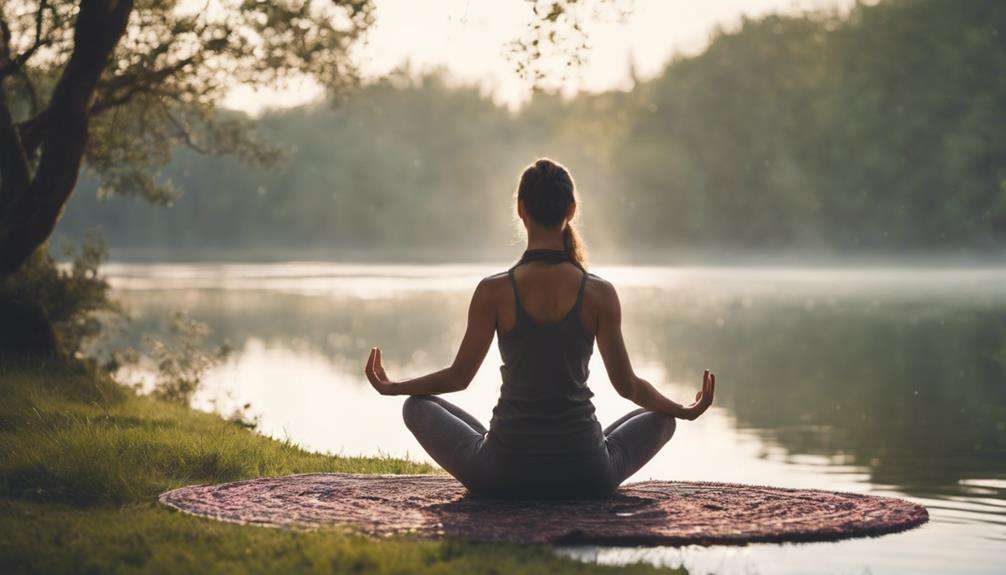
Mindful movement involves tuning into your body's sensations and movements during physical activities to enhance present-moment awareness and promote relaxation. Activities like yoga, tai chi, walking meditation, and mindful stretching are excellent ways to practice mindful movement. By focusing on body sensations and movements, you can reduce anxiety and stress while improving coordination, balance, flexibility, and overall well-being.
Engaging in mindful movement allows you to connect with your body on a deeper level, fostering emotional regulation and a sense of calm. By being fully present in the movements you make, you cultivate a greater awareness of your body and mind, leading to a more relaxed state. This practice can have a profound impact on your overall well-being by integrating mindfulness into your daily routine.
Frequently Asked Questions
What Is the 5 Things Method for Anxiety?
To combat anxiety, try the 5 Things Method. Ground yourself by naming five things around you. Engage your senses and focus on the present. This simple technique promotes mindfulness, breaking the cycle of worry.
What Are 5 Ways I Can Practice Mindfulness?
To practice mindfulness, start with mindful breathing to calm your mind. Engage in body scans to release tension, guided meditations for relaxation, mindful walks in nature, and gratitude journaling for positivity. These techniques can reduce anxiety.
What Is the 3 3 3 Rule Anxiety?
When anxiety strikes, try the 3 3 3 rule. Name three things you see, hear, and feel around you. Ground yourself in the present moment to shift focus from worries, calming your mind instantly.
How Can I Practice Mindfulness and Reduce Anxiety?
To practice mindfulness and reduce anxiety, you can try various techniques like breathing exercises, grounding methods, visualization, nature walks, body scans, journaling, meditation, progressive relaxation, gratitude exercises, and mindful eating. These practices help calm your mind and body.
Conclusion
Take a deep breath, let go of the tension, and tune into the present moment.
Just as a river flows gently around obstacles, allow your thoughts to pass by without getting caught up in them.
Embrace the practice of mindfulness as a powerful tool for reducing anxiety and finding inner peace.
Remember, you hold the key to calmness within you.
Trust in the process and continue to cultivate a mindful way of being.
